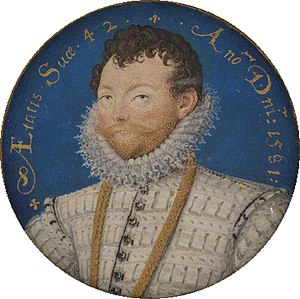Francis Drake

Vice Admiral Sir Francis Drake (1540 – 27 January 1596) was an English sea captain, privateer, navigator, slaver, and politician of the Elizabethan era. He was born in Tavistock and grew up in Kent, where he learned to be a sailor. Soon he was a shipmaster (captain). Queen Elizabeth I awarded Drake a knighthood in 1581, which he received on the Golden Hind in Deptford. He was second-in-command of the English fleet against the Spanish Armada in 1588. He also carried out the second circumnavigation of the world, from 1577 to 1580 during which he attacked towns of the Spanish Empire. He had always been a powerful enemy to the Spanish.
He died of dysentery in January 1596[1] after he had unsuccessfully attacked San Juan, Puerto Rico.
His exploits were legendary. He was a hero to the English but a pirate to the Spaniards. King Philip II was reported to have offered a reward of 20,000 ducats,[2] today worth about £4,000,000 (about US $6,500,000) for him to be killed.
References[change | change source]
- ↑ According to the English calendar that was then in use, Drake's date of death was 27 January 1595, as the New Year began on 25 March.
- ↑ Cummins, John, Francis Drake: The Lives of a Hero, 1996, Palgrave Macmillan. ISBN 0312163657
